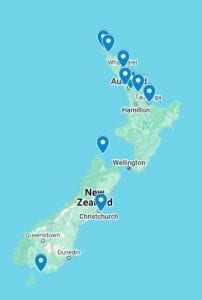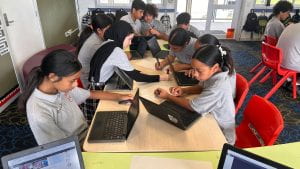Today we used papyrus AI to help us write a Narrative writing about Red Riding Hood and Snow White combined together. A generative AI is creating something, and to predict (guess) patterns and words. I also learned about the LLM which stands for Large Language Model. We used summaries and retell them in our own words. I really liked the way it replies faster, and how it tells you what you need to add to make it improve by the AI giving feedback.
Bonds of magic and courage.
Once upon a time, in a village near big forests and wide meadows, there were two girls named Snow White and Red Riding Hood. Snow White was known to play tricks and sometimes seemed a little distant from the others. She acted this way to protect herself. Red Riding Hood, however, was always kind and ready to help anyone who needed it.
One day, as the sun rose, people in the village talked about a strange problem. The gardens were drying up, and food was getting scarce. Red Riding Hood wanted to help. She walked through the busy market, asking people if they knew how to fix the problem.
As she walked, she thought about Snow White, who had a tough life after her mother died. Snow White’s stepmother, Stephanie, was mean and didn’t like Snow White because she was so pretty and talented. But Snow White stayed strong and smart, even when things were hard at home.
Red Riding Hood decided to ask Snow White for help. They met in the village square, and Red Riding Hood told her about the curse on the village. At first, Snow White wasn’t sure, but Red Riding Hood’s kind words made her want to help. She agreed to join Red Riding Hood and try to save the village.
In another part of the village, Red Riding Hood was worried because her grandma was sick. To cheer her up, Red Riding Hood picked flowers and baked biscuits, then walked through the forest to her grandma’s house with the basket of treats.
Meanwhile, Stephanie had a magical mirror that talked to her. Every day she asked, “Mirror, who is the prettiest of them all?” The mirror always said, “You are beautiful, but Snow White is even more beautiful.” This made Stephanie angry and jealous. She thought about how to make Snow White less beautiful.
Snow White was really scared because she thought the huntsman would get rid of her, as her stepmother wanted. But the kind huntsman had a good heart and let her run away to a new place where she could be safe.
When Stephanie realized Snow White was missing, she asked her magic mirror, “Where is Snow White?” The mirror showed her where Snow White had gone. Angry and determined, Stephanie disguised herself as an old woman and went to Snow White’s hiding place. She knocked on the door, pretending to be kind, and convinced Snow White to let her in.
Once inside, Stephanie revealed her true intentions. She tied Snow White with a rope until Snow White fainted, leaving her in danger.
Red Riding Hood, searching for her friend, came upon the house and sensed something was wrong. She hurried inside and found Snow White unconscious and tied up. Quickly, Red Riding Hood untied her, allowing Snow White to breathe again. As Snow White slowly came back to life, she thought to herself that she would never trust strangers at her door, even if they appeared to be harmless old women.
After their narrow escape, Snow White and Red Riding Hood knew they had to come up with a plan to protect themselves and end Stephanie’s wickedness. Together, they devised a plan to confront Stephanie and break the hold the magic mirror had over her.
They decided to take the mirror away from Stephanie, hoping it would free her from jealousy. With bravery in their hearts, they sneaked back into Stephanie’s home. Using clever tricks and teamwork, they managed to distract Stephanie and retrieve the mirror.
Once the mirror was in their hands, Snow White and Red Riding Hood smashed it into pieces. As the shards scattered, Stephanie’s enchantment was broken, and with it, her obsession with beauty faded.
Stephanie, freed from the mirror’s influence, realized the harm she had caused and asked for forgiveness. Snow White, learning the power of kindness and forgiveness, decided to give her stepmother another chance.
With love and unity, the village’s gardens began to bloom again. Snow White and Red Riding Hood’s friendship grew stronger, proving that courage, trust, and a little bit of magic can overcome any darkness.




